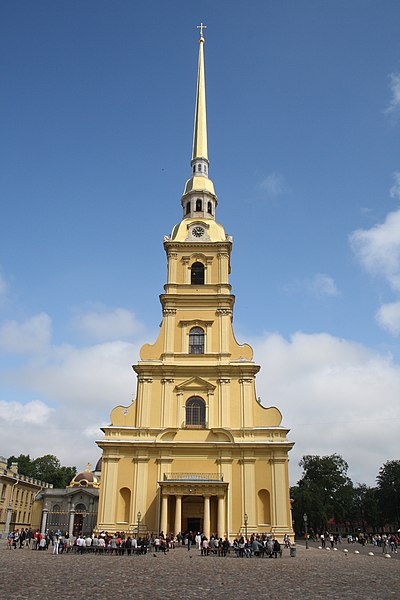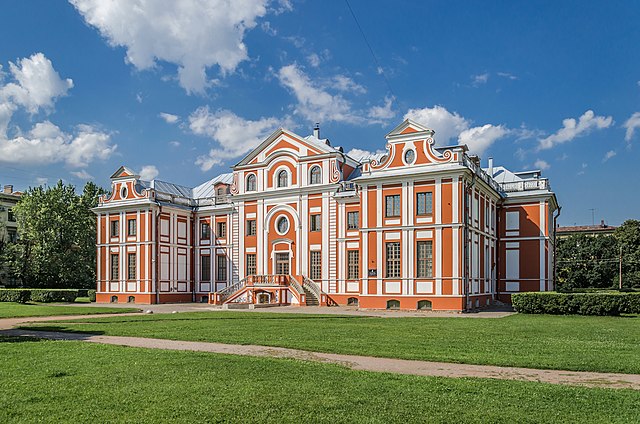Kadriorg Palace is an 18th-century Petrine Baroque palace in Kadriorg, Tallinn, the capital of Estonia. Both the Estonian and the German name for the palace means "Catherine's valley". It was built in 1718–1725 to Nicola Michetti's designs by Gaetano Chiaveri and Mikhail Zemtsov. The palace currently houses the Kadriorg Art Museum, a branch of the Art Museum of Estonia, displaying foreign art from the 16th to 20th centuries. The building of the Kumu branch of the museum, showing Estonian art from the 18th century onwards is located nearby in the Kadriorg Park.
Kadriorg Palace in Tallinn
Stucco decoration with Catherine's initials in the great hall of the palace
Ceiling fresco in the great hall
The front façade during sunset
Petrine Baroque is a style of 17th and 18th century Baroque architecture and decoration favoured by Peter the Great and employed to design buildings in the newly founded Russian capital, Saint Petersburg, under this monarch and his immediate successors.
The Saints Peter and Paul Cathedral by architect Dominico Trezzini exists as it was originally designed. It is regarded as the most notable example of the Petrine Baroque style of architecture.
Kikin Hall (1714), an example of private residence dating from Peter I's reign.
The Summer Palace
The Twelve Colleges, Construction began by Trezzini in 1722








